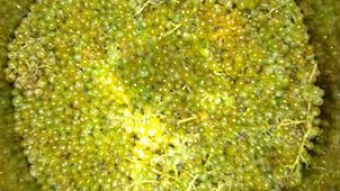Wine of the sea that came from overseas
We are headed to Sanlúcar de Barrameda to explore the history of another centuries-old Spanish bodega which is still run by the descendents of the original founding family. We are talking about Barbadillo, overlooking the sea and the Coto Doñana, on the shores of the Atlantic Ocean which played such an important role in the story of its creation. Barbadillo, wine of the sea that came from overseas.
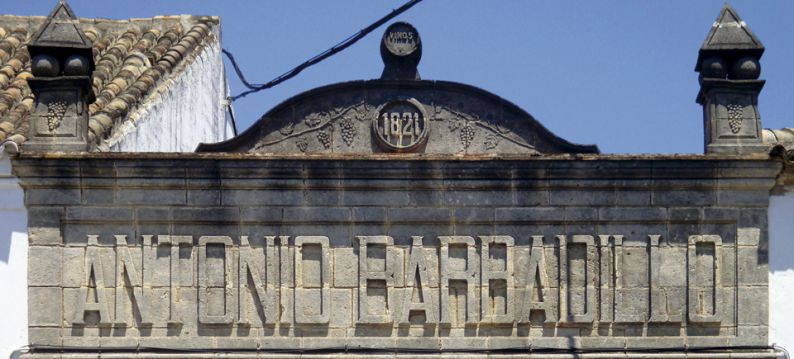
The history of the Barbadillo family is closely linked to the Seven Infantes de Salas, better known as the Seven Infantes de Lara, the name given them in ballads and legend.
10th Century, Castile Country. Doña Lambra, Lady of Barbadillo, born in Briviesca, was a Castilian noblewoman related to the famous Fernán González, Count of Castile. She was betrothed to another nobleman by the name of Rui Velázquez, the uncle to the seven bellicose characters, the "Infantes" of the story. At Doña Lambra’s wedding, an altercation between members of both families ended in a violent death. Revenge for the death gave rise to the cruel legend of the "Seven Infantes de Lara", and in a small way, (they are only distant ancestors of the Barbadillos) was at the origin, many centuries later, of the bodegas in Sanlúcar.
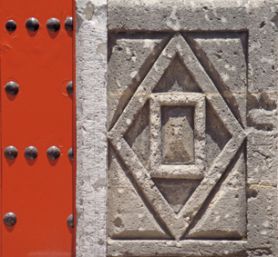 Because of the fatal incident at Doña Lambra’s wedding, which sparked the legend and death of the Seven Infantes, the heirs and supporters of the Lady of Barbadillo moved to the beautiful town of Covarrubias, under the protection of their relatives, the Counts of Castile. So we have officially found history’s first users of the Barbadillo surname, all settled in Covarrubias, in the province of Burgos.
Because of the fatal incident at Doña Lambra’s wedding, which sparked the legend and death of the Seven Infantes, the heirs and supporters of the Lady of Barbadillo moved to the beautiful town of Covarrubias, under the protection of their relatives, the Counts of Castile. So we have officially found history’s first users of the Barbadillo surname, all settled in Covarrubias, in the province of Burgos.
Centuries go by and a certain Tomàs Barbadillo, an ordained priest (from Covarrubias of course), decided to emmigrate to Mexico in the late 18th century, presumably on an evangelizing mission. He was able to amass a sizeable clerical fortune in the country. His nephews came over from Castile to manage these important assets. The Barbadillo priest died in the early 19th century, making his nephews his heirs. The first two nephews who had come to help him manage his wealth, received a large share of this sizeable inheritance. Their names were Benigno Barbadillo and Manuel López Barbadillo and they were first cousins.
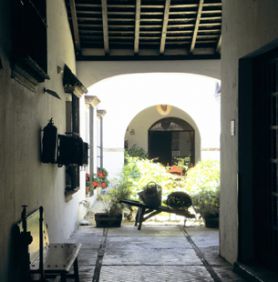 Needless to say, "father" Barbadillo’s had strong businesses in Mexico; sales and exports of cocoa and beans, import of wines, pharmacies and real estate, etc, but presumably it was wine which brought the two rich cousins to the Cádiz town of Sanlúcar de Barrameda, as there seems to have been little else to have drawn them there. The two cousins arrived in the town in 1821. Due to Mexican Independence, nearly all Don Tomàs’ remaining nephews who had also gone to Mexico to manage the wealthy priest’s estate and businesses, returned to Spain and they settled in the Burgos and Castile homeland of Covarrubias.
Needless to say, "father" Barbadillo’s had strong businesses in Mexico; sales and exports of cocoa and beans, import of wines, pharmacies and real estate, etc, but presumably it was wine which brought the two rich cousins to the Cádiz town of Sanlúcar de Barrameda, as there seems to have been little else to have drawn them there. The two cousins arrived in the town in 1821. Due to Mexican Independence, nearly all Don Tomàs’ remaining nephews who had also gone to Mexico to manage the wealthy priest’s estate and businesses, returned to Spain and they settled in the Burgos and Castile homeland of Covarrubias.
Manzanilla is born
Sanlúcar 1821. The famous Sanlúcar manzanilla was starting to appear under this name and the denomination was really in its infancy, but in the early 19th century, both in Sanlúcar and in the neighbouring towns of Chipiona, Rota, and Jerez, etc., wine businesses were already flourishing with bodegas and markets of sweet wines, red wines, oloroso sherries, pajaretes, spirits, etc.
The first references to manzanilla in the Barbadillo company date from 1827, when it was described as such in a shipment destined for.... Philadelphia! Apparently the first person to refer to the Sanlúcar white wine in this way, a few years earlier, had been the great Esteban Boutelou, a brilliant botanist born in Aranjuez, who was commissioned by Godoy to create a botanical garden in Sanlúcar. He studied the Sanlúcar de Barrameda winemaking practices in depth and put together a delightful handbook which is an excellent reference book for all those interested in the subject. In fact, I believe that it was originally published upon the initiative of Bodegas Barbadillo, which edited it to very high standards.
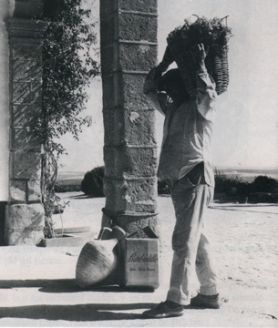 Looking at the origin of the manzanilla name, it appears that it comes from the resemblance of the white wine’s aroma to the flower of the chamomile plant (manzanilla in Spanish). Nothing to do with olives, small apples, or with the village of Huelva known as Manzanilla (for years Huelva belonged to the Duchy of Medina Sidonia, the capital of which was Sanlúcar). Talking of manzanilla olives, I was told a funny story about a manzanilla exporter who sent a keg of manzanilla olives in brine to some English customers as a Christmas gift. Shortly after, his English importer called him, very concerned, to inform him that the wine had really gone off - it was cloudy and very salty, and what's more it contained many large, foreign bodies in suspension! Apart from its humorous side, this anecdote suggests that in England at that time Sanlúcar manzanilla wine was better known than the manzanilla variety of olives, also from Seville of course. What came first, the chicken or the egg? The manzanilla olive or manzanilla wine? No doubt the olive.
Looking at the origin of the manzanilla name, it appears that it comes from the resemblance of the white wine’s aroma to the flower of the chamomile plant (manzanilla in Spanish). Nothing to do with olives, small apples, or with the village of Huelva known as Manzanilla (for years Huelva belonged to the Duchy of Medina Sidonia, the capital of which was Sanlúcar). Talking of manzanilla olives, I was told a funny story about a manzanilla exporter who sent a keg of manzanilla olives in brine to some English customers as a Christmas gift. Shortly after, his English importer called him, very concerned, to inform him that the wine had really gone off - it was cloudy and very salty, and what's more it contained many large, foreign bodies in suspension! Apart from its humorous side, this anecdote suggests that in England at that time Sanlúcar manzanilla wine was better known than the manzanilla variety of olives, also from Seville of course. What came first, the chicken or the egg? The manzanilla olive or manzanilla wine? No doubt the olive.
Don Benigno's first stone
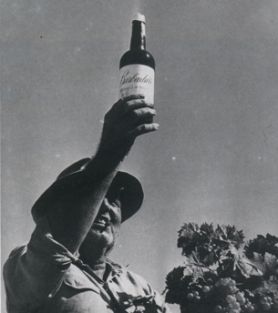 Not long after their arrival, Don Benigno and his cousin bought their first bodega from another trader and producer in Sanlúcar, and this purchase was to be the foundation stone of the current large complex of bodegas belonging to the Barbadillo family and company which occupy hundreds and hundreds of hectares in the old quarter of Sanlúcar de Barrameda. Don Benigno would appear to have been an admirable character and is no doubt the main protagonist in this story. He married in his forties to a lady from a Santander family and had five children. Only two survived and one of them, Manuel, took over the bodega’s business which was growing fast.
Not long after their arrival, Don Benigno and his cousin bought their first bodega from another trader and producer in Sanlúcar, and this purchase was to be the foundation stone of the current large complex of bodegas belonging to the Barbadillo family and company which occupy hundreds and hundreds of hectares in the old quarter of Sanlúcar de Barrameda. Don Benigno would appear to have been an admirable character and is no doubt the main protagonist in this story. He married in his forties to a lady from a Santander family and had five children. Only two survived and one of them, Manuel, took over the bodega’s business which was growing fast.
Manuel, in turn, married a lady of power and influence from Sanlúcar and the couple also had five children, all boys. One of these, Antonio, created the company under the name, “Antonio Barbadillo S.A.” (today it is simply known as “Bodegas Barbadillo”). They continued buying up numerous "cascos" (this is how they referred to the large ageing cellars of great height and beauty, also known as “cathedrals of wine”) and the business took off dramatically.
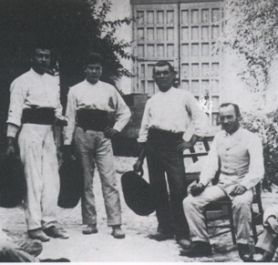 We now come to the happy 20’s in the early 20th century and manzanilla as such existed, with its flor, its yeasts and its unique aging system, yet there was still no designation of origin or "Consejo Regulador" (Regulatory Board - the same one as for Sherry), nor did it have its current characteristics. For many years, about a hundred or so, since the time of the arrival of the illustrious Don Benigno from Mexico, the family wine business had been bottling a manzanilla now officially known as such, under the “Divina Pastora” brand name.
We now come to the happy 20’s in the early 20th century and manzanilla as such existed, with its flor, its yeasts and its unique aging system, yet there was still no designation of origin or "Consejo Regulador" (Regulatory Board - the same one as for Sherry), nor did it have its current characteristics. For many years, about a hundred or so, since the time of the arrival of the illustrious Don Benigno from Mexico, the family wine business had been bottling a manzanilla now officially known as such, under the “Divina Pastora” brand name.
The five children of Don Antonio and Doña Caridad Rodriguez Terán, the city's first lady and heiress to a large fortune, in turn had many children who together built and ran this important Andalusian wine company. One of these, Manuel, writer and poet as well as the company winemaker, was the father of Toto (Antonio Pedro) one of the most energetic, admired and well-loved Barbadillos in the current story, who I had the honour of knowing. He was a historian with a great sense of humour and an expert on his subject.
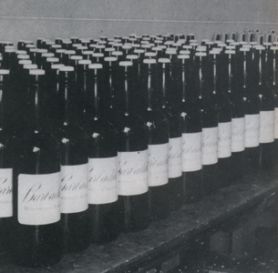 To Toto, undoubtedly, is due the invention of the famous “Castillo de San Diego” white wine, better known to all as "the white Barbadillo" which has become the best selling white wine in all of Spain, exceeding sales of the Bodega's other wines, all manzanillas. At one point its sales were even bigger than those of all the finos and manzanillas marketed under the sherry name. This is a real bomb of a wine that burst on drinkers’ palates. It is made from the same grape variety used for manzanilla but produced by a completely different process, without organic ageing under a cap of flor.
To Toto, undoubtedly, is due the invention of the famous “Castillo de San Diego” white wine, better known to all as "the white Barbadillo" which has become the best selling white wine in all of Spain, exceeding sales of the Bodega's other wines, all manzanillas. At one point its sales were even bigger than those of all the finos and manzanillas marketed under the sherry name. This is a real bomb of a wine that burst on drinkers’ palates. It is made from the same grape variety used for manzanilla but produced by a completely different process, without organic ageing under a cap of flor.
All Toto's commitment, perseverance and downright stubbornness (in this case a positive trait), had hit the mark!
Castillo de San Diego’s freshness, fruitiness and lightness make it an exquisite match for all seafood, from the incomparable Sanlúcar de Barrameda prawns, famous around the world, to the delicious little shrimp omelettes, the best of which are made in this Cadiz town. Today's Castillo de San Diego, with is original, appropriate and attractive packaging, which makes a clear reference to crustaceans, molluscs and fish, is considered a wine of the sea, and from the sea came the Barbadillos.
Website: http://www.barbadillo.com/



